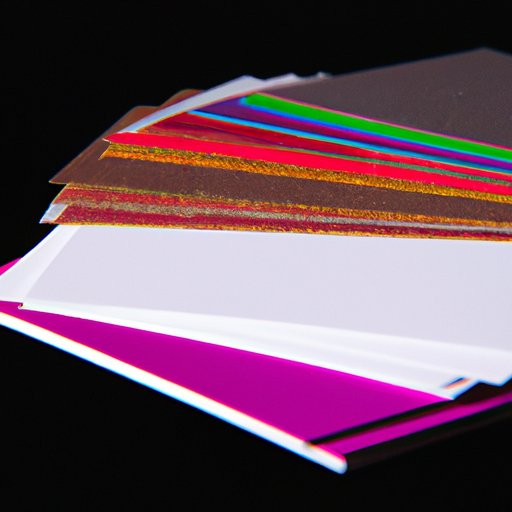
I. Introduction
Stickers are a fun and easy way to decorate just about anything, from your laptop to your water bottle. Making your own stickers can be even more rewarding, as it allows you to personalize your designs and express your creativity. This article will provide you with a step-by-step guide to making your own stickers, as well as tips and tricks for successful sticker-making. It will also cover DIY sticker kits, creative sticker ideas, unique materials for sticker-making, sticker printing and distribution, and sticker design and branding.
II. Step-by-Step Guide
Before you start making stickers, you will need some materials. These include:
- Blank sticker paper (available at craft stores or online)
- An inkjet or laser printer
- Scissors or a cutting tool
- A ruler or cutting mat
- A design program or app (such as Adobe Illustrator or Canva)
To make your own stickers, follow these simple steps:
- Create your design in a design program or app.
- Print your design onto the blank sticker paper using an inkjet or laser printer.
- Cut out your stickers using scissors or a cutting tool. Be sure to cut carefully and follow the edges of your design.
- Peel off the backing of your sticker and apply it to your desired surface.
To ensure a successful outcome, here are some tips and tricks:
- Make sure your printer is set to the correct paper size and type before printing.
- Use high-quality sticker paper for the best results.
- Clean and dry the surface before applying your sticker.
- Smooth out any bubbles or wrinkles with a credit card or squeegee.
III. DIY Sticker Kits
DIY sticker kits are pre-packaged sets that come with everything you need to make your own stickers, including sticker paper, designs, and cutting tools. These kits are a great option for beginners or those who want to try sticker-making without investing in a lot of materials upfront. Some benefits of DIY sticker kits include:
- Convenience and affordability
- Easy-to-follow instructions
- A variety of design options
Some examples of good DIY sticker kits include:
- The Silhouette Cameo Starter Bundle
- The Cricut Explore Air 2 Mint Bundle
- The Xyron Create-A-Sticker Machine
IV. Creative Sticker Ideas
The possibilities for sticker designs are endless, but here are some creative ideas to get you started:
- Pet portraits
- Food puns
- Cute cartoon characters
- Travel destinations
- Flower arrangements
To make your stickers even more unique and fun, try using different materials for texture, such as glitter or felt. Additionally, if you plan on creating stickers for commercial use, consider designing designs that have a mass appeal and potential for profitability, such as inspirational quotes or trendy icons.
V. Unique Materials for Sticker-Making
While sticker paper is the most common material for making stickers, there are alternative materials you can use to create even more unique designs. Some of these include:
- Washi Tape – easy to use and great for adding patterns and color.
- Contact Paper – adhesive and sturdy, this material is perfect for creating large stickers.
- Clear Vinyl – great for creating custom shaped stickers and adding a glossy finish.
- Magnet Sheets – perfect for creating fridge magnets that look like stickers.
When working with unusual materials, it’s important to follow the specific instructions for that material. Additionally, some materials may require a different printing method or cutting tool, so be sure to do your research beforehand.
VI. Sticker Printing and Distribution
To print custom stickers effectively, there are a few things to keep in mind:
- Use the highest-quality printing setting for the best resolution.
- Make sure your printer is calibrated correctly for the sticker paper type you are using.
- Consider outsourcing your printing to a professional printing service for large quantity orders.
Distributing your stickers can be as simple as giving them to friends and family, or you can sell them online or at a local market. Some ideas for distributing your stickers include:
- Selling on Etsy or other e-commerce platforms
- Partnering with local businesses for co-branding opportunities
- Creating social media accounts to showcase and sell your creations
VII. Sticker Design and Branding
When designing your own stickers, there are a few principles to keep in mind to make them stand out:
- Use bold and simple designs for easy recognition.
- Consider color psychology to evoke certain emotions or vibes.
- Use high-quality images or vector files for the best resolution and clarity.
Branding your stickers with a logo or website link can also help build your brand and lead to more sales or recognition.
VIII. Conclusion
In conclusion, making your own stickers can be a fun and rewarding experience. Whether you’re creating them for personal use or for commercial purposes, there are plenty of materials and design options to choose from.





